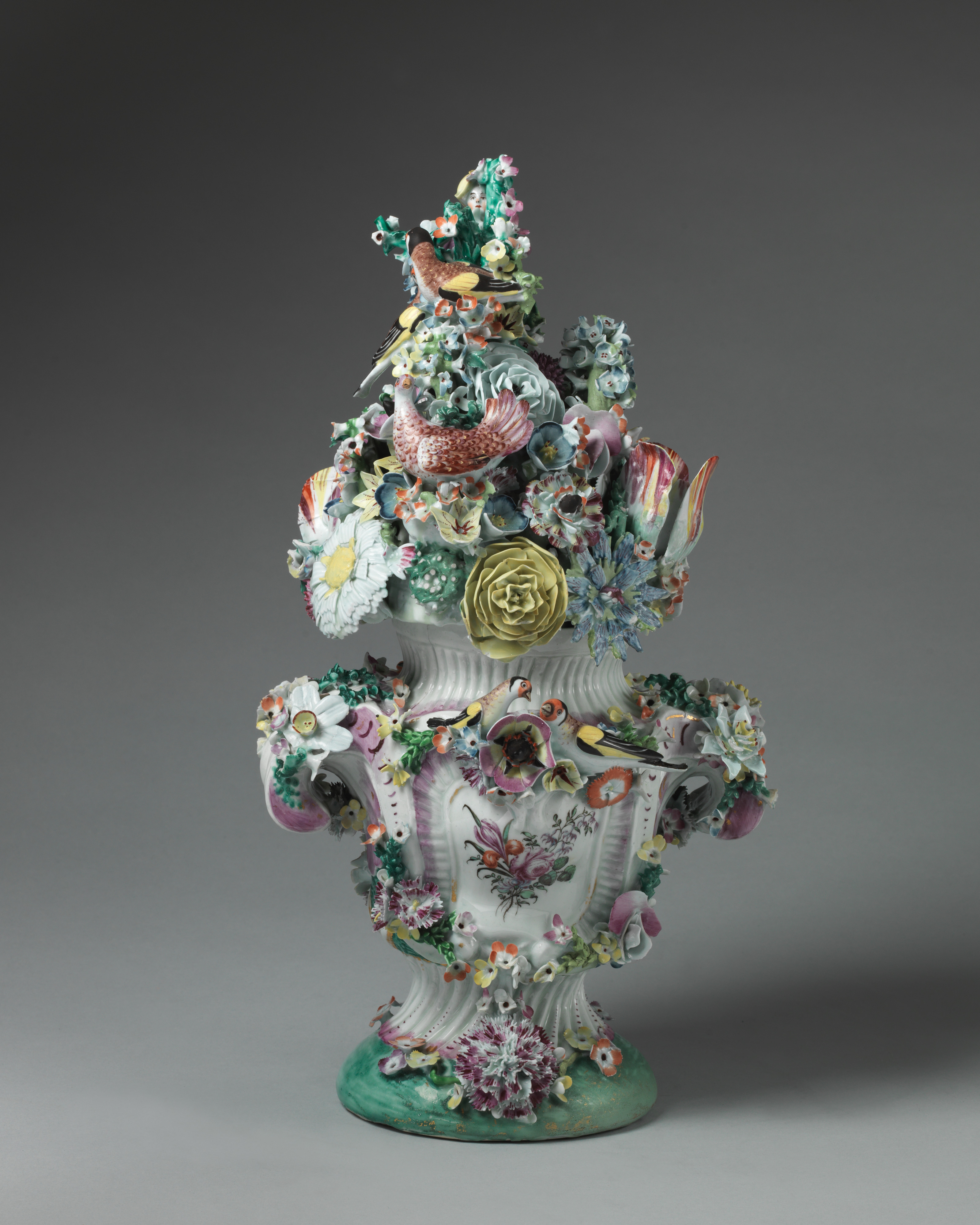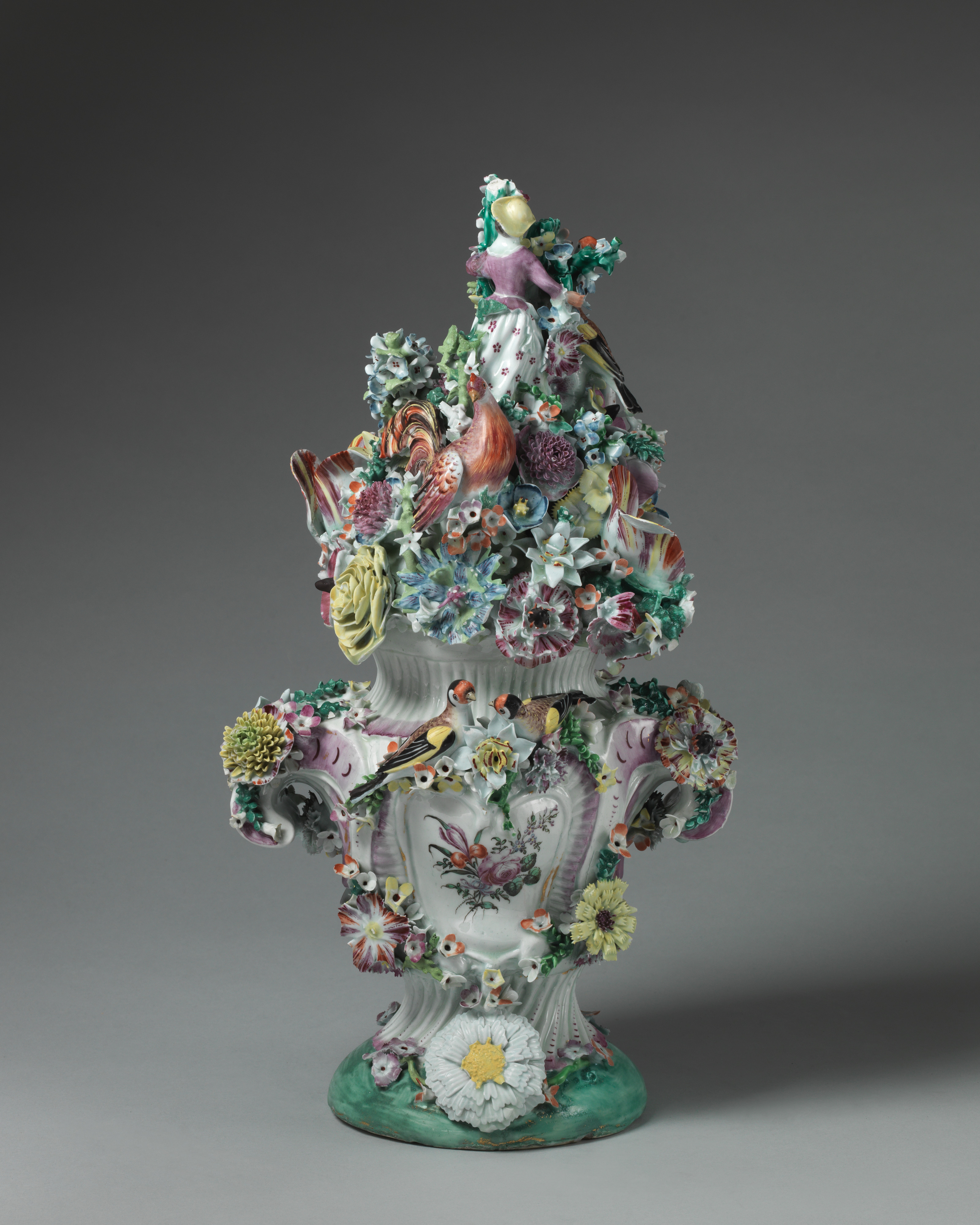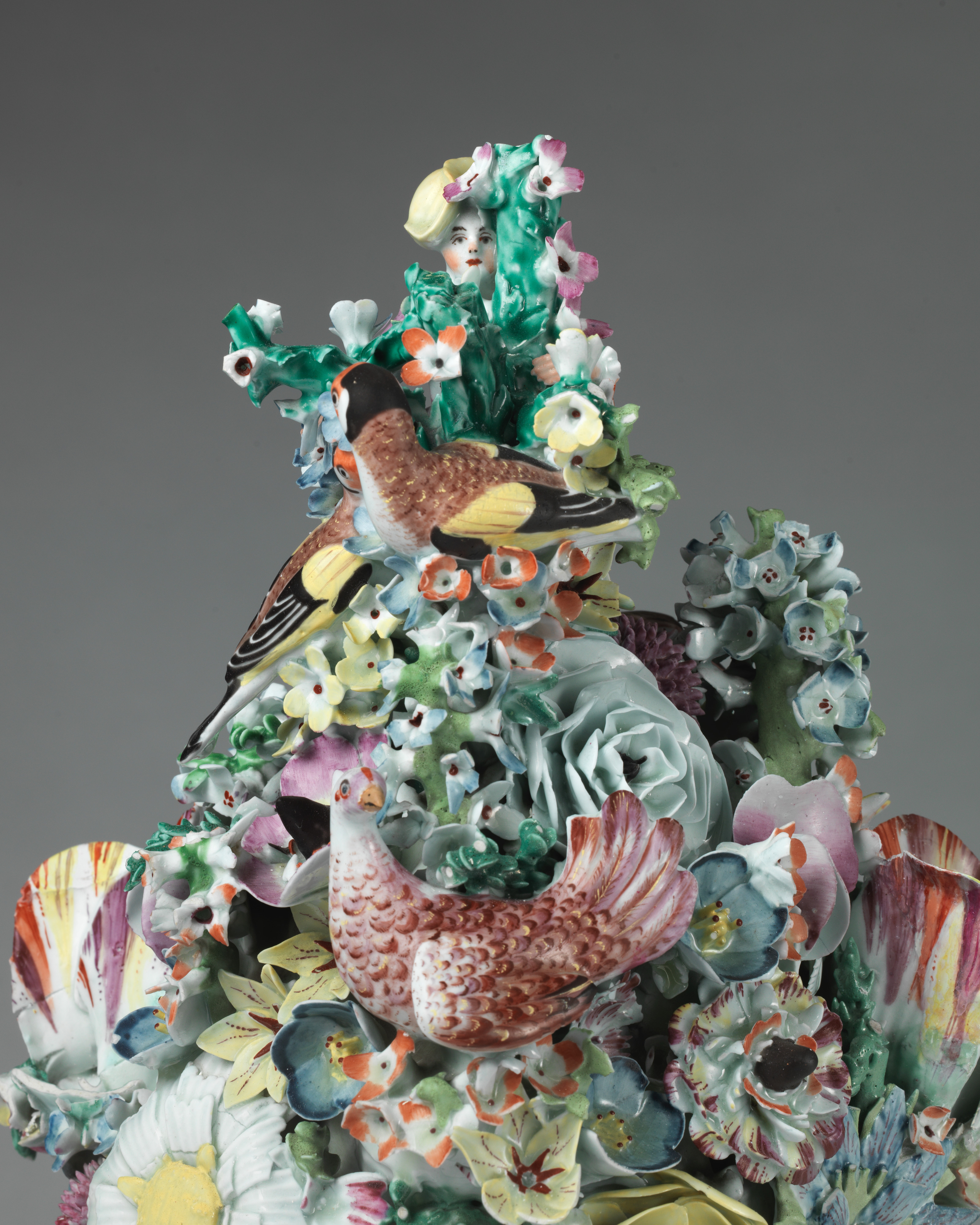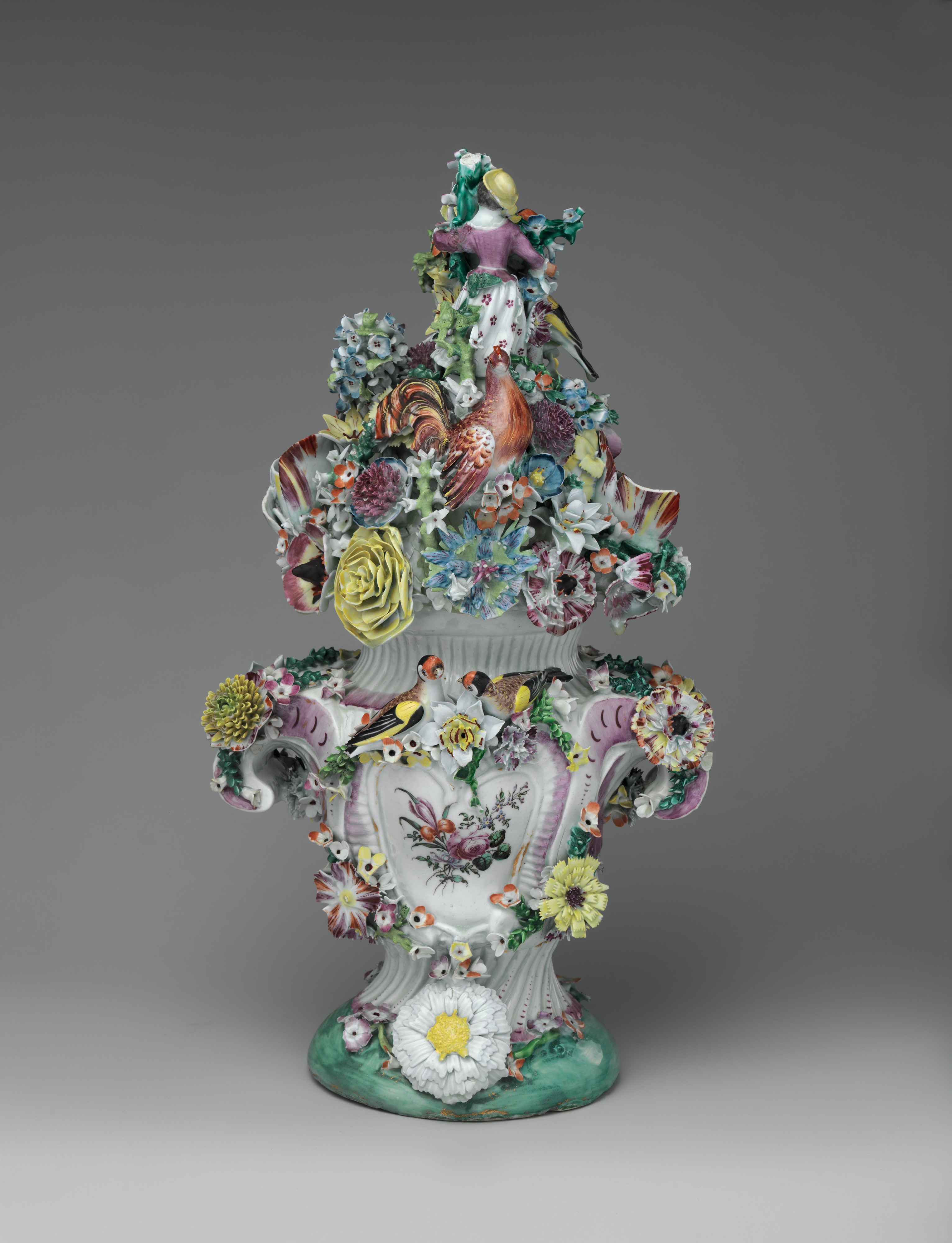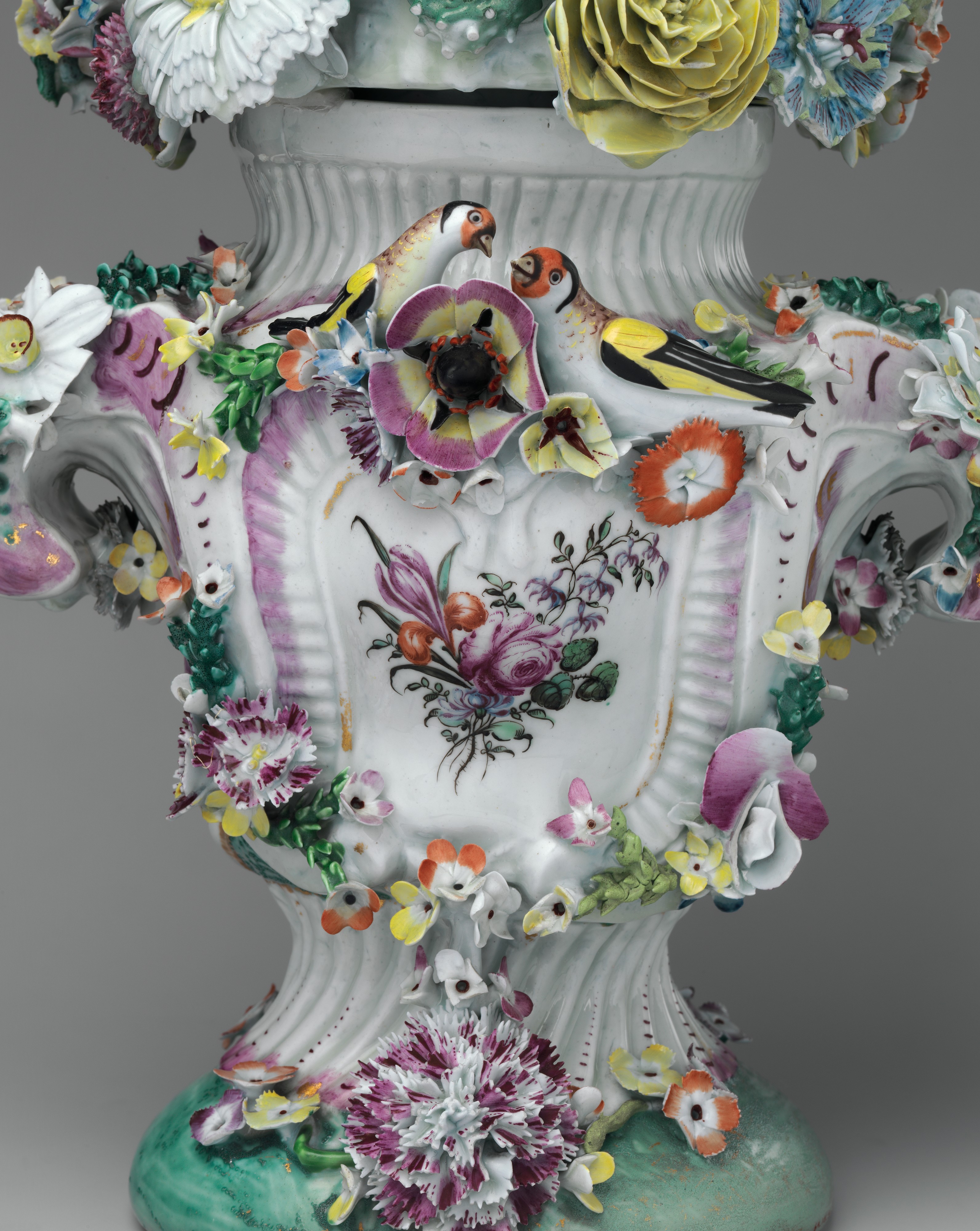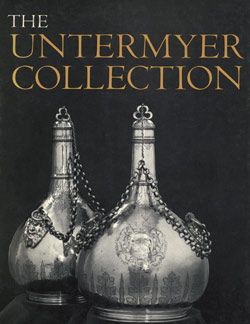Vase with cover
Factory Longton Hall British
The factory established at Longton Hall in Staffordshire, England, around 1749 was the first concern to make porcelain in a region long renowned for its production of earthenware and stoneware. The ambition to produce porcelain in an area with a thriving pottery industry reflects the high esteem in which the new ceramic medium was held, as well as the aspirations for its commercial success. The factory was founded by William Jenkinson (British, d. 1771), who “had obtained the Art Secret of Mystery of Making a Certain porcelain Ware in Imitation of China Ware,”[1] though it is not known with certainty where he gained this knowledge. The person who was to prove crucial to the success of the enterprise, however, was William Littler (British, 1724–1784), a potter with extensive experience in the medium of salt-glazed stoneware. Equipped with knowledge of both clay and kiln technology, Littler served as manager of the factory from his arrival in 1751 to the factory’s closure in 1760.
Initially, the factory focused on the production of figures, and the technical and artistic challenges that it encountered are reflected in the figures’ rather crude modeling and stiff poses. While the factory continued to make figures, around 1754 it began to produce the wares for which it is best known today: those characterized by an exuberant naturalism and a pronounced sculptural quality. The factory embraced the asymmetry of the Rococo, and many of its decorative objects, such as the Museum’s covered vase, are distinguished by the forceful curving lines that are the signature of this style. A wide array of small tureens and stands, teapots, serving dishes, sauce-boats, and plates were produced, most of which were composed of vegetal forms with low-relief molded decoration painted with a considerable degree of naturalism (fig. 58). While Meissen porcelain in this vein and their Chelsea copies must have served as the primary source of inspiration, Longton Hall produced works of great originality, which incorporate a sense of both naïveté and whimsy not present in any of the prototypes.[2]
The Museum’s vase is one of a small number of similar works made at Longton Hall, which are among the most ambitious of the factory’s production.[3] Not only are these works made at a scale larger than most Longton Hall porcelain but their design also reflects the factory’s use of motifs drawn from nature at its most extreme. The curving lines of the vase’s volute handles and the lack of symmetry of the cartouches on each side reveal the influence of the Rococo; yet it is the extraordinary incrustation of flowers and birds that distinguishes this vase and the related examples. The form of the vase is partially obscured by the applied, high-relief flowers, and the cover is all but subsumed by the dense application of floral motifs among which are four small birds and a standing female figure barely visible due to the wealth of vegetation.
The flowers are modeled with considerable detail and realism, and the labor involved to create and apply them would have presumably made this covered vase one of the most expensive of all of Longton Hall’s products. The delicacy of the floral modeling was possible only in the medium of porcelain, because the nature of both earthenware and stoneware would not have allowed for the requisite thinness for realistic floral blossoms. This vase must have appeared particularly notable when compared to the typical production of the pottery factories from the region, since it displays a level of technical virtuosity that could not be attained by the other ceramic bodies. The proprietors of the factory must have taken satisfaction in 1757 when they advertised “Flowers of all Sorts, made exactly to Nature, allow’d by the best Judges to be the finest in England,”[4] even if the nature of advertising encouraged a degree of exaggeration.
Despite the technical skill reflected by the flowers on this vase, neither the figures nor the wares made at Longton Hall attained with consistency the level of quality that characterizes the production at Chelsea or at Bow, and it is not uncommon to find a range of technical flaws that included thick potting and firing cracks. Due to the competition offered by the other English porcelain factories, and perhaps also to poor marketing,[5] Longton Hall struggled financially through the latter half of the 1750s, and the factory closed in 1760 after losing the support of one of its major share-holders. The factory stock, consisting of more than 90,000 objects,[6] was sold off, bringing to a close one of the most inventive and idiosyncratic of England’s early porcelain enterprises.
Footnotes
(For key to shortened references see bibliography in Munger, European Porcelain in the Metropolitan Museum of Art. NY: The Metropolitan Museum of Art, 2018)
1 Watney 1957, p. 52.
2 Spero 1995, p. 76.
3 Similar covered vases are in the British Museum, London (1940,0401.3); Mint Museum, Charlotte, N.C. (Gallagher 2015, pp. 206–7, no. 132); and the Victoria and Albert Museum, London (414:36/&A- 1885). The latter two vases have pierced covers and must have been intended as potpourris.
4 Advertisement from Aris’s Birmingham Gazette, July 20, 1757, quoted in Peirce 1988, p. 144. 5 Peirce 1988, p. 142.
6 Ibid.
Due to rights restrictions, this image cannot be enlarged, viewed at full screen, or downloaded.
This artwork is meant to be viewed from right to left. Scroll left to view more.


